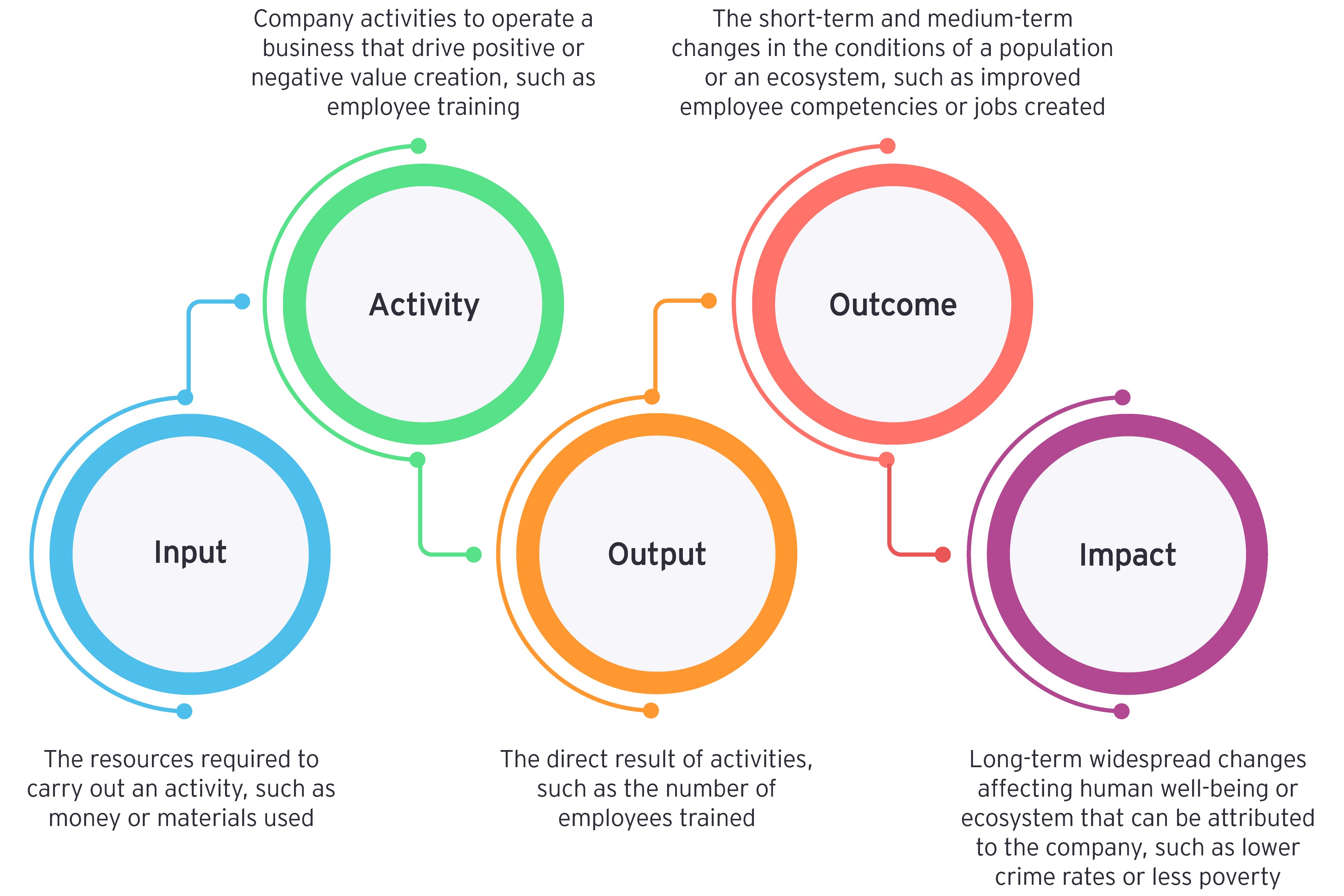Step 2: Identify positive and negative project impacts
Once the objectives and project scope have been determined, you can map the potential positives and negatives of the project. This is also called “applying the theory of change” – a process to identify the causal links and the conditions that need to exist for change to occur across the identified outcomes, which can be enhanced or mitigated depending on their impact.
Step 3: Perform a materiality assessment
Once the theory of change has been developed, an organization aiming to make the most of its social and human capital should identify its priority impacts and dependencies and develop strategies for sustainably managing social and capital value. A first step in doing this is conducting a materiality assessment. This involves:
- Engaging with internal and external stakeholders and seeking their input on what the organization’s social and human capitals encompass
- Identifying the aspects where the company would have the most material impact and potential dependencies
Step 4: Develop metrics
For the most material topics, identifying what metrics are going to be used to measure the outcomes include developing criteria and reporting policies on how data will be collected. Despite the complexities, organizations might be further along than they think. Groups within the organization may already be measuring the return on investment (ROI) of existing social and human capital initiatives, such as training programs, relationships with standard setters and involvement with local communities. Leveraging any existing proofs of concept will give the organization a head start.
Step 5: Survey and data collection
Once the metrics have been developed, measurement frequency and survey tools should be determined to collate data for analysis. The collated data should be analyzed using an outcomes measurement framework that has been designed to meet the needs of the organization’s measurement objectives. While harmonization of outcomes measurement approaches is still nascent and evolving, the first principles advocated by the social ROI approach could be applied to ensure the core principles of outcomes measurement are factored in the measurement framework consistently.
Step 6: Reporting
Once the organization has defined its metrics to measure its social and human capital (including, if relevant, associated baselines and targets), developing an internal dashboard and external reporting framework should help the organization communicate on its strategy, progress and commitments to relevant stakeholders.
Whether organizations are attempting to value their social and human capital for the first time or focusing on better integrating these capitals within their business model, first movers will likely be at a distinct advantage in this area of change.
EY Outcomes Measurement teams can support you as you set up, or seek to improve, the effectiveness of your measurement and management systems that account for intangible value and the reporting of this value..
Certain services and tools may be restricted for EY audit clients and their affiliates to comply with applicable independence standards. Please ask your EY contact for further information.


